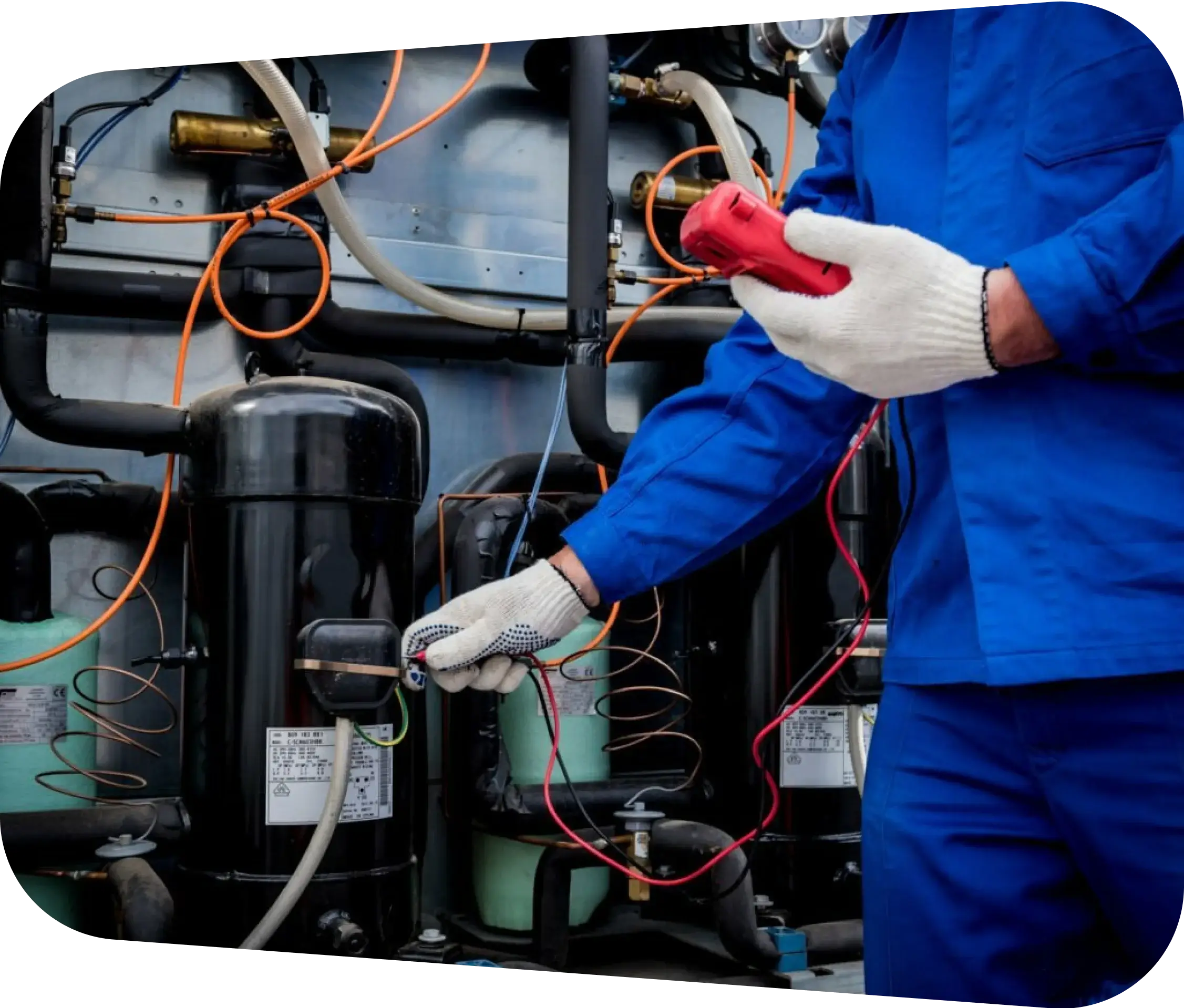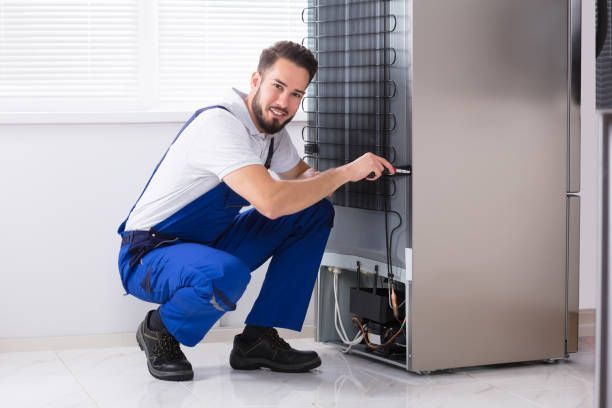Get the Most from Your Appliance Investment with Tips from Authorized Subzero Repair Tucson Dependable Refrigeration & Appliance Repair Service
Get the Most from Your Appliance Investment with Tips from Authorized Subzero Repair Tucson Dependable Refrigeration & Appliance Repair Service
Blog Article
The Ultimate Guide to Do It Yourself Appliance Repair Strategies
From fridges to dishwashing machines, recognizing how to troubleshoot and fix these gadgets can conserve you time and money. Are you ready to uncover vital strategies that will encourage you to handle repair work with confidence?
Understanding Common Appliance Problems
When you rely on your home appliances, it can be annoying when they instantly stop working or act up. Recognizing usual device issues can assist you fix problems properly.
If your oven isn't home heating, defective elements or thermostat concerns might be at fault. Dishwashers frequently experience troubles with water drainage, so make certain the filter is clean and the drainpipe pipe isn't kinked.
Likewise, pay attention for unusual noises; they typically show mechanical concerns. By recognizing these indicators, you can save time and potentially stay clear of costly repair work. A little expertise goes a long method in keeping your home appliances, so remain educated to keep whatever running efficiently.
Necessary Tools for DIY Repair Works
Prior to diving into do it yourself appliance fixings, it is very important to gather the right tools to guarantee the procedure goes efficiently. Beginning with an excellent set of screwdrivers, including both flathead and Phillips, as they're crucial for opening most appliances. You'll additionally desire a set of pliers for grasping and twisting cords or little components.
Do not fail to remember a multimeter; it assists you examination electric parts and identify problems properly. A socket set is handy for loosening or tightening up screws, while an utility blade can be valuable for opening or reducing cables product packaging.
Finally, think about having a flashlight handy to brighten dark rooms inside your home appliances. With these crucial devices, you'll be well-equipped to take on numerous fixings, saving both time and money. Collect your equipment and obtain ready to roll up your sleeves!
Security First: Preventative Measures to Take
Prior to you begin any kind of appliance repair work, it's important to focus on safety and security. Ensure you wear individual safety tools, disconnect the power resource, and maintain your workplace arranged. These simple safety measures can assist protect against crashes and guarantee a smoother repair service process.

Individual Safety Tools
Security equipment is a crucial component of any kind of DIY home appliance repair work job. Steel-toed boots are likewise a smart selection, specifically when lifting heavy devices. Remember, being prepared with the ideal gear keeps you secure and focused on completing your repair work successfully.
Power Source Disconnection
To assure a safe Do it yourself device repair work, detaching the power source is essential. This basic step avoids electric shocks and warranties that you can focus on the repair work without worrying regarding unintended activation. When you're positive that the power is detached, you can confidently proceed with your repairs, recognizing you have actually taken the necessary preventative measures to shield on your own.
Job Location Organization
A well-organized work location can make all the distinction in your Do it yourself device repair work task. Start by removing your workspace of mess to avoid accidents and diversions. A clean space not only boosts efficiency yet likewise maintains you secure while you work on your home appliance repair.
Step-by-Step Guide for Refrigerator Repair Works
When your refrigerator begins acting up, it can be irritating, however tackling the issue yourself can conserve you time and cash. First, unplug the fridge to guarantee safety and security. Look for typical concerns like temperature level changes or uncommon sounds. Check the thermostat setups; they might be established as well high if it's not cooling down. Next, clean the condenser coils, which commonly gather dirt and particles. For a noisy fridge, examine the fan and confirm it's not obstructed.
If there's water pooling within, check the door seals for damages or dust, and clean them if essential. For ice accumulation, clear the defrost drainpipe. Plug the fridge back in and monitor it for a couple of hours once you've addressed the problem. If the problem persists, you might need to replace a damaged part, like the compressor or follower motor. Bear in mind, don't hesitate to seek advice from the guidebook or look for expert assistance if required.
Fixing Cleaning Equipment Issues
Similar to refrigerators, washing machines can offer their very own collection of obstacles, but lots of problems can be resolved with a little bit of troubleshooting. Initially, if your device will not begin, check the power cable and confirm it's connected in. Next, inspect the door latch; a malfunctioning lock can prevent the cycle from starting. It could be due to international objects stuck in the drum or the drainpipe pump. if you discover unusual noises during operation.
If your clothes aren't getting clean, take into consideration the water degree and cleaning agent type; using excessive detergent can develop excess suds, impacting efficiency. For leaks, check out the hose pipes for splits or loosened links. Tightening up these can usually resolve the problem. Routine upkeep, like cleaning up the filter, can protect against lots of problems from emerging. Keep in mind, a little troubleshooting goes a lengthy means in maintaining your washing device running efficiently.
Fixing Stoves and Cooktops
Exactly how can you troubleshoot common issues with your oven or cooktop? Beginning by checking the power supply. Ensure it's connected in and the circuit breaker is not stumbled. If it's a gas range, validate the gas valve is open. Next, test the burners: if they don't fire up, clean up the igniter and check for obstructions in the heater ports.
If your oven isn't heating, evaluate the temperature setups and validate the door seals firmly. If it's harmed., a faulty home heating aspect can additionally be the culprit; you could need to replace it.
For uneven food preparation, rotate your frying pans and think about utilizing a stove thermometer to confirm exact temperatures. If you hear uncommon sounds or scent gas, transform off the home appliance right away and consult a professional. By complying with these useful source actions, you can recognize and resolve numerous typical stove and oven concerns successfully.
Fixing Dishwashing Machines Made Easy
When your dishwasher starts breaking down, it can be frustrating, yet addressing usual issues isn't as difficult as it seems. You'll learn step-by-step troubleshooting techniques that will certainly help you identify the trouble, along with the essential tools you'll require to tackle repair services yourself. Let's make fixing your dishwashing machine a wind!
Usual Dish Washer Concerns
While dish washers are made to make your life simpler, they can in some cases encounter typical concerns that leave you really feeling frustrated. One frequent trouble is poor cleansing efficiency; this typically takes place as a result of clogged spray arms or dirty filters. You may also see water merging near the bottom, which can suggest a defective drain or a kinked pipe. If your dishwashing machine's door won't lock, maybe a simple concern with the lock system or door seal. Additionally, unusual noises can signal damaged parts or loose parts. Finally, if you scent something weird, it could be time to look for food particles or a malfunctioning motor. Resolving these issues early can conserve you time and hassle in the future (Subzero Repair Service Dependable Refrigeration & Appliance Repair Service).

Detailed Troubleshooting
Before diving right into repair work, it's important to recognize the certain issue your dishwasher is dealing with. If it's not cleaning properly, Beginning by examining. Evaluate the spray arms for obstructions and assurance they rotate easily. Check out door seals and tubes for any kind of damages if it's leaking. For weird noises, listen very closely during cycles; foreign objects might be stuck in the filter or impeller. Inspect the power supply and door see this site lock if your dish washer won't start. Do not neglect to consult your customer guidebook for repairing suggestions specific to your design. By methodically dealing with each prospective concern, you can pinpoint the issue and take the essential steps to repair it, making your dishwashing machine function like brand-new again.
Necessary Fixing Devices
When repairing your dish washer,Having the right devices at your disposal can make all the distinction. Start with a screwdriver set, as you'll usually need both Phillips and flathead options. A multimeter's essential for detecting electrical issues, while pliers can assist you hold and manipulate numerous parts. Don't fail to remember a pail or towels for any type of water splashes during repair services.
If you're tackling clogs, a drain serpent or a wet/dry vacuum will be indispensable. You may additionally desire a degree to assure your dishwashing machine's properly lined up. Safety gear like safety glasses and handwear covers will certainly protect you while you work. With these vital tools, you'll be well-equipped to tackle any kind of dishwashing machine fixing difficulty that comes your means.
Often Asked Concerns
Just how Do I Identify if a Home Appliance Deserves Fixing?
To determine if a home appliance's worth repairing, consider its age, repair costs, and existing worth. If repairs exceed half the replacement cost, you might desire to buy a new model rather.
Can I Discover Replacement Components Locally for My Appliance?
Yes, you can often find substitute parts in your area for your device. Examine equipment shops, device fixing shops, or neighborhood classifieds. Don't neglect to bring the design number to assure you obtain the correct component!
When Repairing Devices?, what Common Mistakes Should I Avoid.
When fixing home appliances, prevent hurrying through diagnostics, ignoring security precautions, or utilizing wrong tools. Do not skip reading manuals or watching tutorials; they give necessary guidance. Be person and detailed to ensure successful repair services and stop additional damage.
The length of time Does a Regular Do It Yourself Device Repair Work Take?
A regular DIY device repair work generally takes one to three hours, depending upon the intricacy. You'll intend to gather your materials and devices initially, and follow guidelines carefully to stay clear of unneeded go to website hold-ups.
Are There Any Guarantees for DIY Appliance Services?
When you take on do it yourself device repair work, warranties generally do not cover your work. Some makers could recognize service warranties for components you change. Constantly examine your appliance's guarantee terms prior to beginning any kind of repair services to stay clear of concerns.
Before diving right into DIY home appliance repair services, it's vital to gather the right tools to assure the procedure goes smoothly.Before you begin any home appliance fixing, it's essential to prioritize safety and security.To ensure a risk-free DIY appliance repair, detaching the power resource is necessary.A well-organized work location can make all the distinction in your Do it yourself appliance repair project. Always examine your home appliance's guarantee terms prior to starting any kind of repair services to stay clear of concerns.
Report this page